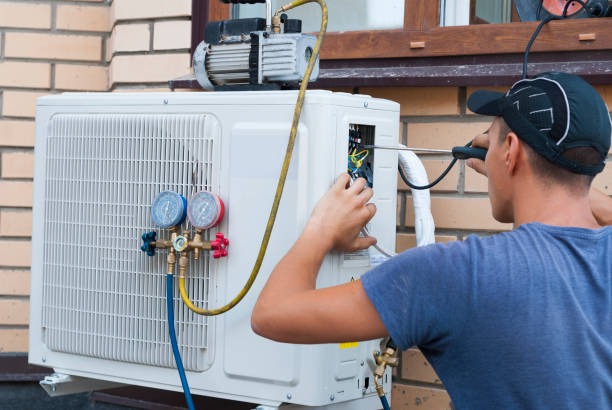Maintaining a comfortable home environment throughout the year is essential for overall well-being and quality of life. One of the key components in achieving this comfort is an efficient heating and air conditioning system. These systems not only regulate indoor temperatures but also contribute to better air quality, energy efficiency, and ultimately, cost savings.
When considering heating options, it’s important to choose a system that suits your specific needs and climate conditions. In colder regions, furnaces or boilers are common choices due to their ability to provide consistent heat during harsh winters. Furnaces work by blowing heated air through ducts that deliver warm air to rooms throughout the house via registers or grills. Boilers, on the other hand, heat water which provides either hot water or steam for heating.
For cooling needs during warmer months, central air conditioners are popular as they cool the entire house efficiently. They use refrigerants to absorb heat from indoor Essential Heating and Air expel it outside while circulating cooled air back into living spaces. Alternatively, ductless mini-split systems offer flexibility by allowing individual temperature control in different rooms without requiring extensive ductwork.
Energy efficiency is a critical factor when selecting both heating and cooling systems. Modern units come with high-efficiency ratings such as AFUE (Annual Fuel Utilization Efficiency) for furnaces and SEER (Seasonal Energy Efficiency Ratio) for air conditioners. Higher ratings indicate more efficient energy use which translates into lower utility bills over time.
Beyond just temperature regulation, these systems play a significant role in maintaining good indoor air quality (IAQ). Proper ventilation helps reduce pollutants like dust mites, mold spores, pet dander, and volatile organic compounds (VOCs), thereby minimizing health risks associated with poor IAQ.
Regular maintenance of HVAC systems ensures they operate at peak performance levels all year round. Simple tasks such as changing filters regularly can prevent clogs that strain the system leading to inefficiencies or breakdowns over time. Additionally, scheduling professional inspections annually can identify potential issues early on before they become costly repairs down the line.
Investing in smart thermostats further enhances home comfort by allowing homeowners precise control over their environment remotely via smartphones or tablets—adjusting settings based on occupancy patterns reduces unnecessary energy consumption significantly.
In conclusion, having reliable heating and cooling solutions tailored specifically towards one’s climate zone not only keeps homes cozy regardless of season but also contributes positively towards healthier living conditions while optimizing operational costs effectively through enhanced efficiencies offered by modern technology advancements within this sector today!

